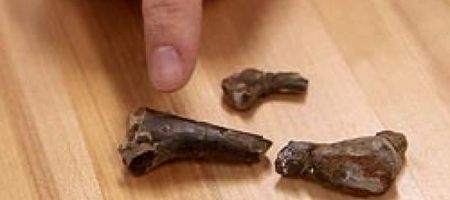A South Dakota scientist has discovered a new species of dinosaur – and found that its babies were the meal of choice for a type of crocodile.

The evidence comes in the form of tiny pieces of dinosaur bone found in southern Utah. Dating back to the late Cretaceous period, they appear to baby dinosaurs one or two meters in length – and show bite marks on bone joints, as well as a crocodyliform tooth still embedded in a femur.
The findings are significant, because historically dinosaurs have been depicted as the dominant species.
“The traditional ideas you see in popular literature are that when little baby dinosaurs are either coming out of a nesting grounds or out somewhere on their own, they are normally having to worry about the theropod dinosaurs, the things like raptors or, on bigger scales, the T rex. So this kind of adds a new dimension,” says Clint Boyd of the South Dakota School of Mines & Technology.
“You had your dominant riverine carnivores, the crocodyliforms, attacking these herbivores as well, so they kind of had it coming from all sides.”
Based on the teeth marks, it looks like the crocodyliforms – a now extinct relative of the crocodile family – were also pretty small, maybe a couple of meters long. It’s the first direct evidence of small crocodyliforms interacting with small dinosaurs, and only the second time a crocodyliform tooth has been found embedded in any prey animal.
The sheer concentration of tiny dinosaur bones, say the researcher, implies they were a favorite food.
“Maybe it was closer to a nesting ground where baby dinosaurs would have been more abundant, and so the smaller crocodyliforms were hanging out there getting a lunch,” suggests Boyd.






